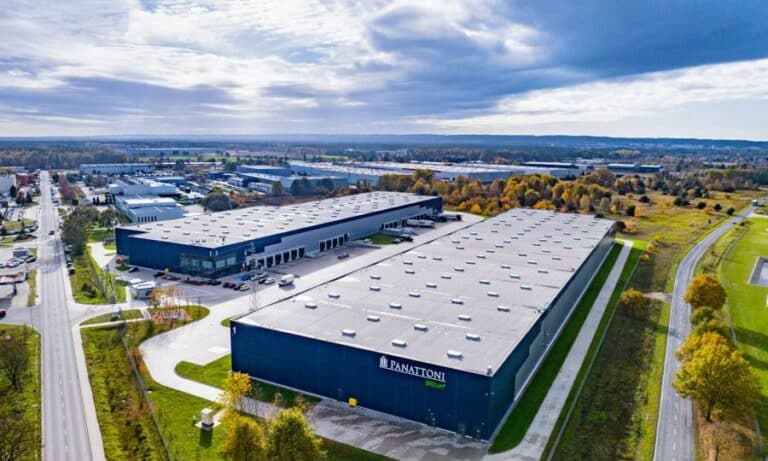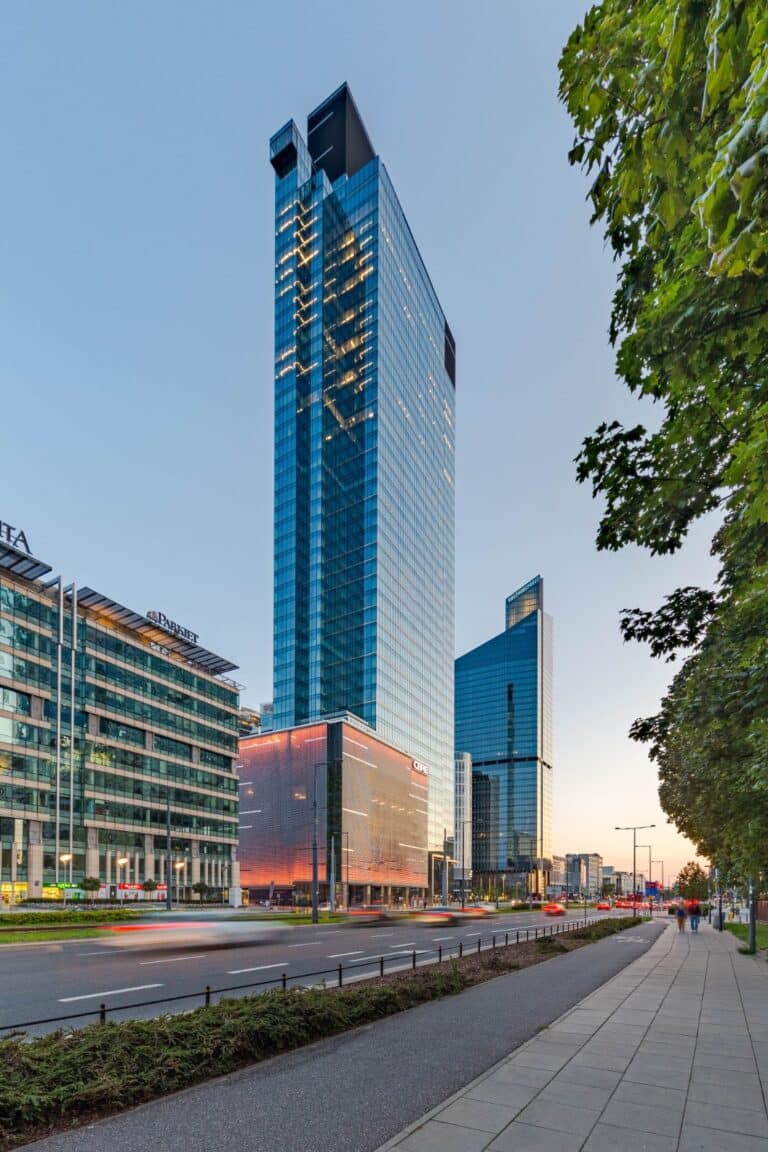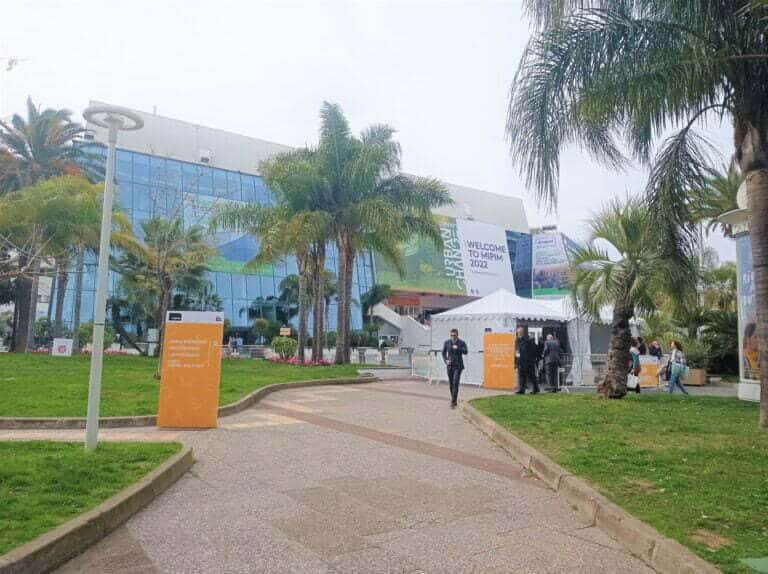Outlook for the Polish housing market
The Polish real estate market – commercial and residential – has been going through a phase of rapid growth in the last decade.
Poland has one of the lowest housing availability rates in Europe, estimated to be lacking 2.5 million units. Poland also has one of the lowest average number of rooms per person. Because of rising inflation and an increasing number of people buying real estate as an equity investment, we are seeing steadily growing demand on the market. Additionally Poles are increasingly open to taking bank loans to buy apartments – from January to the end of August, the value of such a loans grew 28.6% year-on-year. High demand and insufficient supply reflect rising prices. Flats are around 10% more expensive than a year ago. These data are averaged for the seven largest cities, where up to 70% of the transaction value was financed with cash.
We should also remember that Poles still have very limited investment opportunities, e.g. due to the lack of REITs, only 4% of commercial real estate is owned by domestic investors. In the Czech Republic, where the laws regulating the functioning of REITs were passed in 2013, the proportion of local capital increased from a similar level to 21% last year. In Germany, this share is higher than 50%. On the other hand, all the formats available on the Polish market that democratise investing, such as condo, apartment or real estate equity, are very popular – an investor with even small capital becomes a shareholder in the managed apartment or investment and receives a guaranteed profit.
“The lack of REITs in Poland entails considerable restrictions for potential investors. This business model, which has been successful in the US, UK and Germany for a long time, is not yet implemented in Poland. The main problem is the legislative background. It is a pity, because this is a great opportunity to invest in real estate without the need of having large savings. We also do not have to worry about ongoing maintenance of the property, which is impossible in the case of, for example, renting. Moreover, REITs offer the possibility of investing in commercial real estate. Today, only successful companies can afford it,” says Michał Sapota, president of HRE Investments, one of the market leaders. The gross value of assets managed by this independent holding company, operating as a private equity fund, already exceeds EUR 1.4 billion and is systematically growing.
Rising prices and demand
The value of apartments on the Polish market increased by 13.5% in a year and amounts to a total of almost EUR 1.08 trillion. The latest Eurostat data puts Poland among the European countries with the highest share of the primary market in the total value of real estate sold. For example, from January to September 2021, over 164,000 new apartments were put into use. In 2020, there were almost 222,000, 7% more than in 2019.
“As for how Covid-19 influenced the real estate market, I can say with full responsibility that it strengthened it even more. HRE closed the past year with over 3,000 new apartments. Currently, we are carrying out over a dozen investments throughout Poland, which will allow us to commission over 5,000 sq m. premises. Looking more broadly, the real estate market is still booming. This is shown by record sales results. Despite the increase in prices, more and more people are choosing their own apartments. There is a situation where developers are not keeping up with building new apartments to meet demand. This shows that investing capital in real estate is very safe and focused on high profits,” says Michał Sapota, president of HRE Investments.
In Poland, the number of notarial deeds related to the sale of real estate is also growing. During the pandemic in 2020, a total number of 565,000 notarial deeds were signed.
For several years, developers have been struggling with a deficit of construction land. The accelerating economy exacerbates this problem. In 2020, land prices for multi-family housing in Warsaw increased by 13% and from 11% to 17% in other locations. The biggest obstacles for developers in Poland include, as mentioned, the lack of investment land, slow administrative processes lasting for years, extending up to 7 years investment cycle, and rising prices of building materials and employees. The last factor strongly stimulates the development of prefabrication and modular solutions.
“It is worth emphasizing that the primary market rebuilt relatively quickly after COVID turbulences, despite the quite restrictive lending policy of banks at the beginning. Clients responded to these restrictions by activating their own resources. Flats are bought both to meet one’s own housing needs and as a still attractive capital investment. Admittedly, we currently have some problems with the availability of certain finishing materials and components, and this is costly, but these are not critical obstacles. The same if it comes to the still low efficiency of local government administration in terms of issuing various types of permits. In general, this affects the slightly smaller supply than it could be. Strong demand and high inflation, practically across Europe, drive prices up,” says Waldemar Wasiluk, vicepresident of Victoria Dom.
Developers also see opportunities for development in smaller towns due to better land availability. At the end of 2020, in Poland, per 1,000 there were 393 dwellings on average. However, the smaller the city, the fewer premises and the greater the shortage. For example, while in Warsaw per 1,000 there are about 569 inhabitants, in Łódź this number is 549, and in Szczecin or Opole it fluctuates around 460. Meanwhile, the supply of investments in such markets is insufficient.
“The pandemic did not cool down the demand for housing. 2021 is one of the best years in the history of our company. The visible impact of the coronavirus on the housing market is a change in the preferences of buyers – pandemic restrictions have significantly increased the interest in premises with a greater number of rooms, where you can create a separate room for work. Properties with gardens, terraces and large balconies are also selling faster. Buyers also pay more and more attention to common spaces and green areas in the investment area. We take these changes into account in new projects, green areas in Warsaw’s Aleja Praskie or Ceglana Park in Katowice are of priority importance and occupy a large part of the estate,” says Andrzej Oślizło, President of the Management Board of Develia, one of the largest development companies in Poland.
Housing bubble or another record
Bloomberg Economics estimates that housing markets around the world are experiencing trends that are unpleasantly similar to those that emerged in the run-up to the 2008 financial crisis. New Zealand, Canada and Sweden show the most worrying indicators of a housing bubble, according to the report, but the UK and US also rank high on the list. Poland is considered a relatively safe market. In turn, according to the UBS global real estate bubble index 2021 for selected cities, the highest risk of a bubble are in Frankfurt, Toronto and Hong Kong, and the lowest in Dubai. Cities like Madrid, Milan and Warsaw were assessed as safe.
The real estate bubble is an increase in home prices fuelled by high demand and speculative spending. It occurs when prices reach absurdly high levels. At some point, demand falls or stagnates and supply increases, causing prices to drop sharply – and the bubble bursts.
In Poland, the developer act imposes many obligations on investors related to the implementation of a project, such as the requirement to set up bank escrow accounts, where the funds of clients buying flats may only be deposited on the developer’s account, depending on the implementation of the investment. The Development Guarantee Fund (DFG) was established, from which in crisis situations, such as the bankruptcy of a developer company or bank, apartment buyers will receive a refund of their paid funds.
“Increases in home prices are primarily the result of a large excess of demand over supply. In the face of high inflation, Poles invest their savings in residential real estate to protect them from loss of value. Developers are trying to meet this demand, but in the face of the shrinking offer of rapidly expanding land for development and prolonged administrative procedures, they are not able to offer sufficiently high supply. In this situation, it is difficult to expect a sudden drop in demand – the slowdown in the market must come eventually, but it will be mild,” says Oślizło.
On the Polish market, with record-breaking demand from domestic individual buyers, institutional investors, including foreign real estate funds, are joining the game on an increasing scale. As a result, developers are not keeping up with the introduction of new apartments to their offers. And this is the greatest threat to the economic situation in the immediate future. If this type of trend is not stopped in the coming months, the market will become very nervous and dangerous, and the risk of a sharp turning point will increase significantly. Experts also warn that loans will not be so cheap soon, because rampant inflation has already prompted the Monetary Policy Council to raise interest rates, which will start to translate into higher repayments.
Currently in Poland, as in many other countries, discussions have been triggered by the global effects of a possible collapse of Evergrande, the second largest developer in China, with 30 million unsold apartments. Its liabilities, also towards large foreign investors, exceed EUR 260 billion. The holding’s creditors are over 170 local banks and more than 120 other financial institutions.
Growing premium segment
The pandemic did not stop the development of the premium segment. The value of the domestic luxury real estate market last year is already over EUR 389 million, an increase of 35% year-on-year. At the same time, more and more Poles are counted among the wealthy. It is not uncommon for very wealthy people to own multiple residential properties.
“Due to this limited supply, finding your dream apartment or residence is not easy. For a long time, we have been recording a growing number of orders from clients who want to find high-end luxury real estate or attractive land for them,” says Tomasz Porowski, CEO of Pantera Invest, a real estate agency in Warsaw.
Everything indicates that the prices of premium real estate will continue to grow, and the stability and resistance of this segment to market fluctuations is its great advantage. There are many buyers in this segment and the offer is growing. Luxury apartments in Poland are still less than 1% of the entire primary market, but in the most attractive cities, such as Gdańsk, it is already 7%. We have been recording the largest premium offer in Warsaw for years, but we also observe its intense growth focused on other large agglomerations and locations with tourist attractions – the Polish coast and mountains. For example, Tri-City has been popular in the segment of holiday apartments, as a “second home”.
“Despite the pandemic, the prices of luxury real estate in Poland and in the world are still growing steadily. Over the last decade, premium prices in Berlin have increased by nearly 146%. In Poland, their further growth is forecast at the level of 7 % annually,” says Tomasz Porowski from Pantera Invest.
Investment in PRS
In Poland the majority of flats are sold to private clients. The PRS (private rented sector) is still at an early stage of development, but more investors wants to create portfolios of thousands of apartments for rent. As calculated by the Polish Association of Developers, the share of PRS apartments in the total rental stock is 0.34%. In Poland, as in the whole of Eastern Europe, we have an owners market. The leader is Romania, with 96.4% of households owning a property. In Poland, it is as high as 83.5%, which gives 10th place globally. For comparison, in the Netherlands it is only 67.8%, and the United Kingdom is outside the top 50 countries.
Meanwhile, the housing needs and lifestyle of young Poles are changing in favour of the rental sector. The symbolic need for property is losing its importance in favour of mobility and financial liquidity. On the other hand, for many households, for which the purchase of a flat is unattainable due to financial reasons, renting is the only alternative, and in the case of people starting out, it is usually a necessity. That opens opportunities to the PRS.
On the other hand, investors are greatly concerned by the changes introduced as part of the Polish government’s “New Deal” programme, which may slow the development of the PRS sector. Under the new law, depreciation should be excluded from tax deductions until the property is sold. As all rental investments are calculated on a long-term basis, these regulations are a big challenge for PRS investors.
Future needs
The consolidation process and the emergence of several dominant entities on markets, including Poland, will significantly change the rules of the game and the level of development margins, based on a large scale of investments. Experience, specialisation and competitiveness are very important in order to provide an attractive and well-selling product. PropTech solutions, and the increasingly popular use of Blockchain technology as a method of financing real estate projects, are also important in creating long-term development directions. The reform of spatial planning, simplification of the construction law, activation of Social Housing Initiatives are all initiatives recently announced by Piotr Uściński, Deputy Minister of Development, aimed at improving the situation on the Polish housing market.







